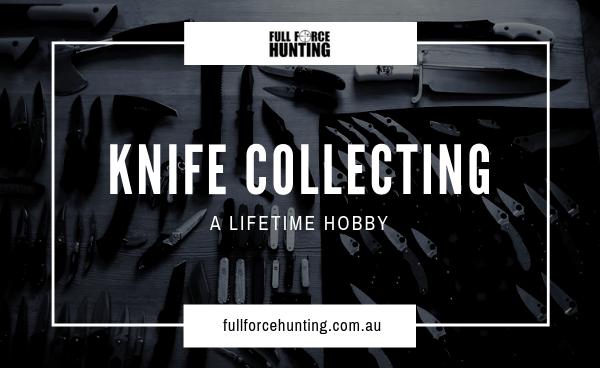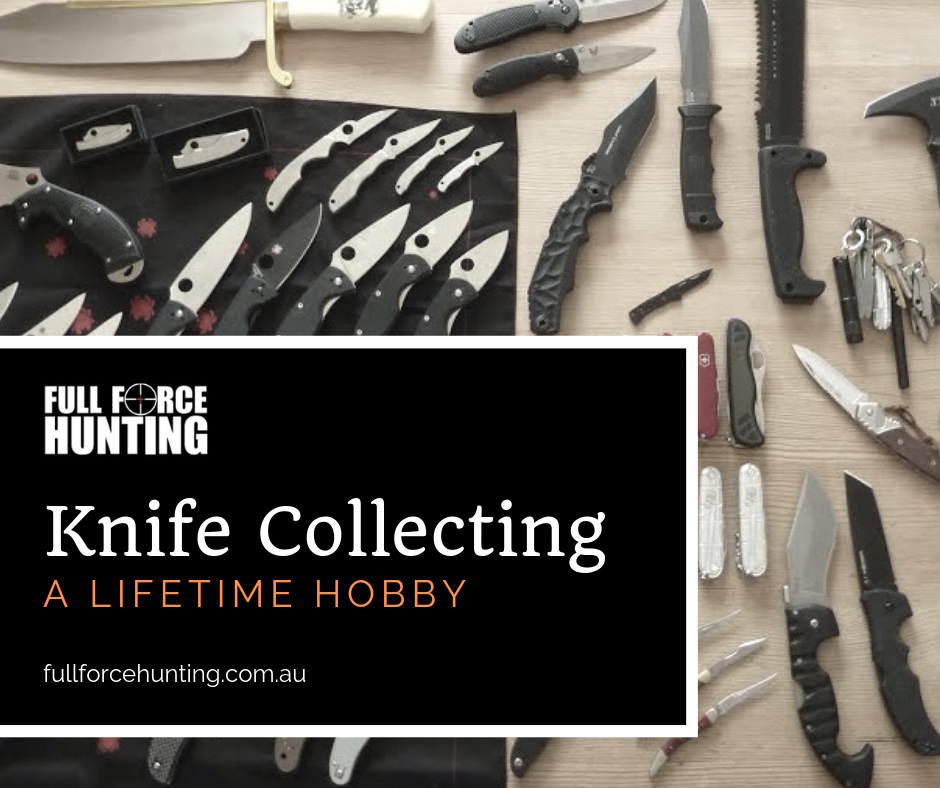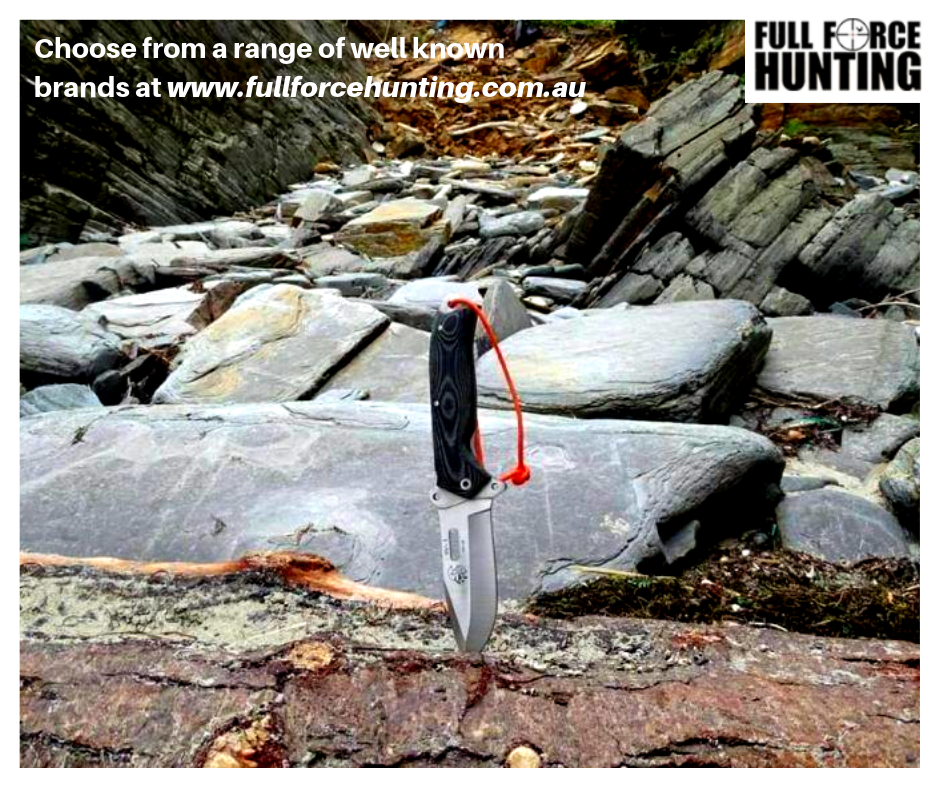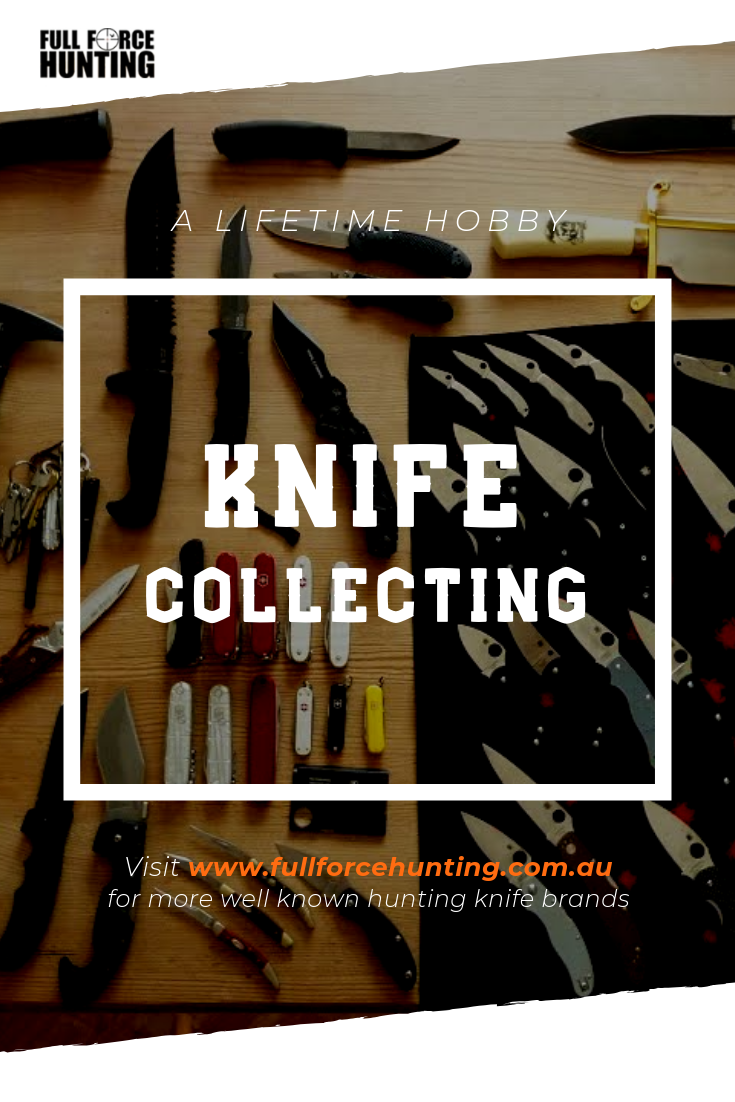Knife Collecting: A Lifetime Hobby - Full Force Hunting Blog

Whatever your level of involvement is with the world of knife collecting, there are important things you need to consider. Knife collecting involves many different things, such as seeking, locating, acquiring, organizing, cataloging, displaying, storing, and maintaining knives. It doesn’t matter what your motivation is, whether that’s art or profit, knife collecting is highly satisfying.
The price for knives can vary from a few dollars to thousands of dollars. Knowing what you’re looking for is important when it comes to determining the price range you’re comfortable with before you make a purchase. This will only help you not only manage your expectations, but it will also make the hobby sustainable and therefore a lot more fun.
Different Types of Knife Collectors
There are many different types of collectors as well. Some of them are generalists, which means they accumulate different types of knives. Other collectors specialize their area of interest so they only focus on a certain kind of knife. Novice collectors usually begin by acquiring personally appealing knives and then slowly grow their knowledge and become more specific with their collection.

Knife Face
Eventually, knife collectors develop what’s called a “knife face” which is the ability to identify the manufacturer of a knife simply by looking at it. The best knife makers in the craft have a very unique style, so often knife collectors focus on their creations to build up their collections. These artists make every knife unique and distinctively their creation, so there are no two knives like it. Often the name of the maker is stamped on the blade and it influences future value tremendously.
Collecting Vintage Knives
Collectors may collect antique knives or knives that are marketed as collectible. For a knife to be considered antique, it has to be at least 100 years old, while collectibles are rather vintage and are even new. Antique knives are of course more expensive, going for prices as high as $200,000 depending on the brand.
In the world of knife collecting, the word “vintage” often describes old collectibles. For example, knives that used to be common objects can now be considered collectibles because almost all of them have been destroyed or discontinued. This is a great focus for collectors. It’s common for collectors to focus on the times of their childhood and collect knives only of that decade.
As a matter of fact, the term “collectible” is quite broad because it encompasses all the knives that have significance, beauty, value or interest but are considered too young to be antiques. This means that not all collectibles are limited editions, and many of them are quite common and have been around for a while.
Knife collectors often search for patterns, while others focus on materials used for the handle, many others focus on brands, and so on. Each collector determines what’s important to them and then they build their collection around that. Some of them value beauty over brands, while others value materials more, and so on.
Knife collectors are also known for planning their collections. What this means is that they take their education seriously and they come to develop their own collecting style base on what they learn about knives in general. There are also collectors who reject the idea of planning their collection and they simply trust their skill to select knives. They may have some background information, but they don’t focus on acquiring as much knowledge as possible.
What sort of Knife Collector are You?
If you can’t decide what kind of collector you are or what kind of knife collection you want to create, going to a knife show can be of great help. You won’t only meet like-minded individuals, you’ll also get to look at other people’s collection and how they carry them out, you get to ask as many questions as you want, and you also get access to tons of reading material. Perhaps the most important takeaway from a knife show is that you get to join a community.
Looking for a local or regional knife club is also a great idea so you can get in touch with other collectors.

Once you decide what kind of knife collection you want to have, you will start growing your collection over time. This means you’ll also need to learn how to properly take care of your knives so they can remain intact and last longer. Collectors often place sentimental value on their knives, so it’s vital to store them in proper places to ensure they’re well-kept.
How to care for Collector Knives
You’ll need to keep your knives properly oiled, dry, and safe from the sun so your blades don’t rust. The best thing you can do is keep your knife collection in a temperature controlled room. This way you can keep them safe and also keep an eye on them so they’re nice and dry.
It doesn’t matter if you’re a knife enthusiast or if you just want to try a new hobby that will make you money in the future, knife collecting is a great option. It’s not only an enjoyable activity, it’s also a great investment.
The value of your collection will only increase over time, and it can be eventually sold for a lot more than you paid for it. Collecting knives is also a great excuse to travel around a bit to get different knives with different backgrounds and stories! One thing’s for sure: once you start your collection, you won’t be able to stop and it will be something you’ll have with you for a lifetime.
If you want to learn more about the world of knife collecting, feel free to message us and we can discuss what’s the right direction for you and how you can get started with this rewarding hobby!


